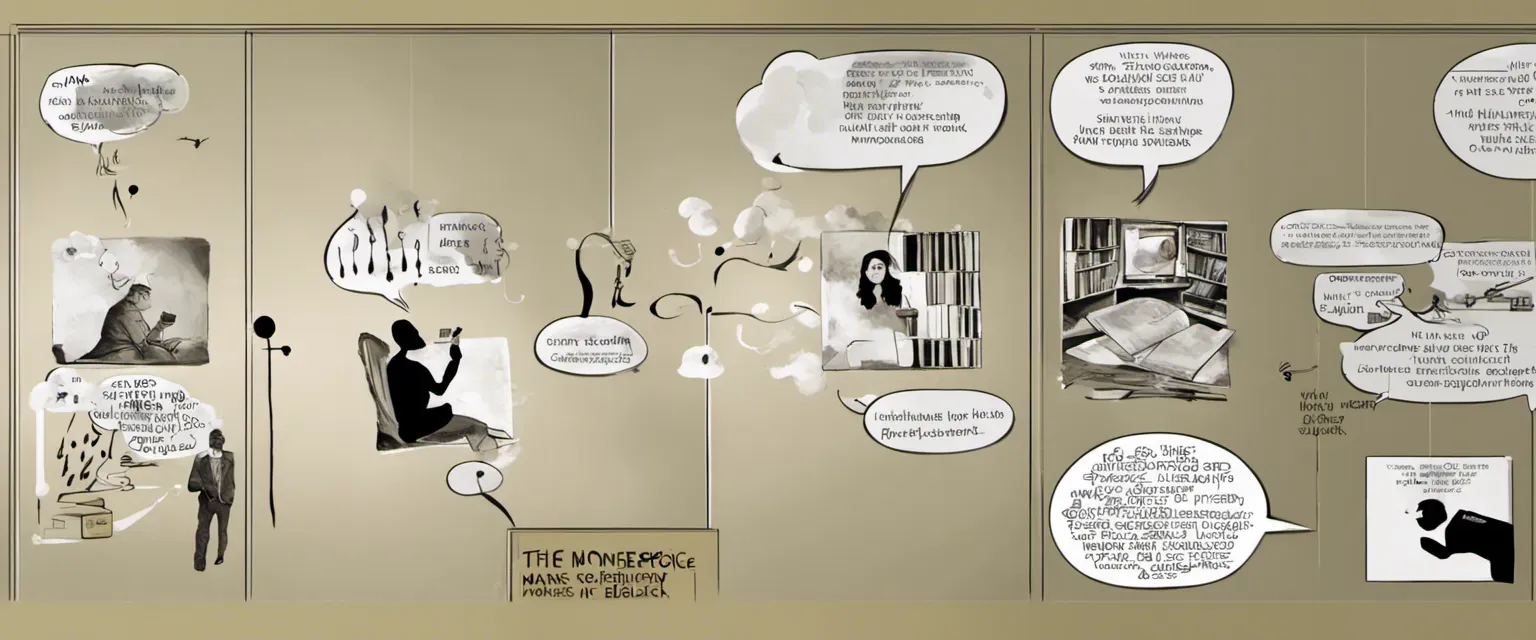——The Information by James Gleick & Empire of Pain by Patrick Radden Keefe
In the realm of non-fiction literature, books have the power to captivate readers with their unique narratives and thought-provoking insights. Two such literary works, “The Information” by James Gleick and “Empire of Pain” by Patrick Radden Keefe, delve into distinct yet intertwined themes, presenting a rich canvas of knowledge and perspective. Through their examination of information theory and the OxyContin epidemic, respectively, these books offer readers a comparative study in understanding the profound implications of information dissemination and the consequences of a pharmaceutical empire’s actions.
James Gleick’s “The Information” invites us to explore the far-reaching impact of information itself, delving into humanity’s relentless pursuit of capturing, transmitting, and comprehending knowledge. Spanning across centuries, Gleick’s intricate narrative presents a comprehensive account of how information has shaped our civilization, forever altering the course of history. By examining the works of influential figures such as Claude Shannon and Alan Turing, the author immerses readers in a profound exploration of the fundamental principles that underpin information theory. From the dawn of language and writing to the advent of digital communication, Gleick exposes the intricate web of information that connects all aspects of our lives; challenging us to question the very nature of reality and the limits of human understanding.
On the other hand, Patrick Radden Keefe’s “Empire of Pain” navigates the dark and devastating realities of the OxyContin epidemic, meticulously dissecting the actions of the Sackler family and their pharmaceutical empire, Purdue Pharma. Keefe’s journalistic acumen shines as he unravels the multifaceted layers of deception and greed that fueled the widespread misuse, addiction, and death associated with OxyContin. Through extensive research and compelling storytelling, the author weaves together a narrative that not only exposes the profound human cost of the opioid crisis but also raises critical questions about corporate responsibility, regulatory failures, and the power dynamics that perpetuated this public health catastrophe. With a keen eye for detail and unwavering pursuit of truth, Keefe’s work serves as a searing indictment of the profit-driven forces that can reshape societal norms, leaving countless lives shattered in their wake.
As these two remarkable works offer distinct vantage points on information theory and its consequences, an exploration of their comparative elements sheds light on the intersections between these seemingly disparate topics. By examining the nuanced ways in which information is assembled, distributed, and manipulated, we gain insights into its power to shape our understanding of the world and influence the choices we make. Additionally, by examining the OxyContin epidemic through the lens of information theory, we can uncover the various channels through which information about the drug’s dangers, the Sackler family’s involvement, and Purdue Pharma’s deceptive practices was disseminated and received. Understanding the interconnectedness of information dissemination in these contexts illuminates the broader implications for society as a whole.
In this comparative study of James Gleick’s “The Information” and Patrick Radden Keefe’s “Empire of Pain,” we embark on a thought-provoking journey through the entangled web of information theory and the lasting effects of a pharmaceutical empire’s actions. By examining the profound consequences of information dissemination in these vastly different contexts, we gain a deeper understanding of how knowledge shapes our world and the responsibility that accompany its dissemination. Through the thematic exploration of these two compelling works, we hope to shed light on the intricate relationship between information theory and the dissemination of critical information, and to provoke meaningful reflections on the ethical, social, and intellectual implications of both.
Brief Summary of Two Books
The Information by James Gleick
The book “The Information” by James Gleick delves into the history and significance of information, exploring how it shapes our understanding of the world. Gleick traces the development of information from its early manifestations in prehistoric cave paintings and ancient language systems to the digital age.
The book examines key figures in the field of information theory, such as Claude Shannon, who created the mathematical foundations for communication and encoding information. Gleick also explores the impact of information on various fields, including genetics, linguistics, and economics. He demonstrates how information can be measured, transmitted, and stored, highlighting its crucial role in the advancement of science and technology.
Gleick discusses the concept of entropy, which characterizes the unpredictability and randomness of information. He introduces the idea that information is a fundamental unit of reality, shaping the way we perceive and interact with the world. By examining the history of information, Gleick uncovers its profound influence on human civilization.
“The Information” goes beyond technical aspects and delves into the philosophical implications of information. It explores the ways in which information has transformed society, from the printing press to the internet, and how it has shaped our understanding of language, thought, and the nature of reality itself.
Overall, “The Information” provides a comprehensive exploration of information theory and its profound impact on human history and understanding. It offers insights into the significance of information in various fields and invites readers to contemplate its role in shaping our world.
Empire of Pain by Patrick Radden Keefe
Empire of Pain” by Patrick Radden Keefe is a gripping and meticulously researched non-fiction book that delves into the story of the Sackler family and their role in the opioid crisis in the United States. The book traces the rise of the Sackler family, who amassed a vast fortune through the development and aggressive marketing of prescription painkiller OxyContin.
Keefe explores the Sackler’s origins as a modest family of Jewish immigrants pursuing their American dream, and their transformation into one of the wealthiest and most influential dynasties in the country. He depicts how the Sacklers positioned themselves in the world of art philanthropy, which served as a smokescreen to mask their involvement in the marketing practices that fueled the opioid crisis.
The author exposes the deceptive marketing strategy employed by the Sacklers and their company, Purdue Pharma, to portray OxyContin as a safe and non-addictive painkiller. Keefe delves into the various tactics employed by the company to manipulate doctors, regulators, and patients. He reveals the internal debates within Purdue Pharma about the drug’s risks and the conscious decision to downplay those risks in the pursuit of profits.
Through extensive interviews and researching court documents, Keefe explores the devastating consequences of OxyContin’s widespread abuse. He highlights how the opioid crisis ravaged communities across America, contributing to a staggering number of overdose deaths, destroyed families, and shattered lives.
“Empire of Pain” examines the legal battles and investigations faced by the Sacklers and Purdue Pharma as their role in the crisis became public knowledge. Keefe depicts the family’s efforts to evade responsibility, shield their wealth, and preserve their reputation.
Overall, “Empire of Pain” provides a compelling and eye-opening account of the Sackler family’s rise to power, their unethical marketing strategies, and their significant role in the opioid crisis. It sheds light on the devastating consequences of corporate greed and the failure of regulatory systems, leaving readers with a deep understanding of the human impact of this crisis.
Comparison between Two Books

Similarities in Historic Spotlight
In parallel, both “The Information” by James Gleick and “Empire of Pain” by Patrick Radden Keefe shed light on important moments in history, exploring various aspects and consequences of significant events.
Firstly, both books delve into the history of scientific and technological advancements that have shaped society. In “The Information,” Gleick explores the evolution of information theory, tracing its roots to ancient civilizations and progressing to the modern digital age. Similarly, in “Empire of Pain,” Keefe uncovers the rise and impact of the Sackler family in the pharmaceutical industry, particularly their role in the development and aggressive marketing of OxyContin. Both books highlight the pivotal role that transformative ideas, scientific breakthroughs, and technological innovations play in shaping the world.
Secondly, both narratives unveil the dark side of progress and spotlight the human, societal, and ethical implications. Gleick’s “The Information” discusses how the flood of information in the digital era has led to challenges such as information overload and the erosion of privacy. Similarly, Keefe’s “Empire of Pain” exposes the devastating consequences of the opioid crisis, revealing the deceptive practices employed by Purdue Pharma and the Sackler family, leading to widespread addiction, suffering, and loss of life. In both cases, the authors shed light on the unintended negative consequences that arise from societal advancements.
Moreover, a central theme running through both books is accountability and the pursuit of justice. Gleick’s “The Information” discusses the importance of information transparency and the ethical responsibility to properly handle and disseminate information. Similarly, Keefe’s “Empire of Pain” scrutinizes the actions of the Sackler family and raises questions about their accountability for the opioid crisis. The books explore how truth, justice, and responsibility are essential for a healthy and just society.
Overall, “The Information” by James Gleick and “Empire of Pain” by Patrick Radden Keefe, although tackling different subjects, both shine a historic spotlight on significant events and their far-reaching effects. They question the impact of progress, reveal moral and ethical dilemmas, and emphasize the importance of accountability and justice in shaping the course of history.
Divergences in Historic Spotlight
The Information by James Gleick and Empire of Pain by Patrick Radden Keefe, although both dealing with different subjects, indeed have a few divergences when it comes to their historical spotlight.
In The Information, James Gleick explores the history and development of information theory, delving into the deep roots of language, communication, and the dissemination of knowledge. Gleick takes readers on a journey through time, tracing the evolution of information from ancient societies to the digital era. He highlights the contributions of key figures such as Claude Shannon and Alan Turing, showcasing their groundbreaking work in the field and how it shaped our modern understanding of information.
On the other hand, Empire of Pain by Patrick Radden Keefe focuses on the Sackler family, the creators of the controversial prescription painkiller OxyContin. Keefe delves into the history of Purdue Pharma, the pharmaceutical company owned by the Sacklers, and uncovers the role they played in the opioid crisis in the United States. He traces the rise of the Sackler family empire, their marketing strategies, and the impact their actions had on public health and society as a whole.
The divergence in the historical spotlight between these books lies in their core subject matter. While The Information covers the broad history of information theory and its impact on human civilization, Empire of Pain delves into the specific history of the Sackler family and the opioid crisis. The focal point of Empire of Pain is a particular event and its aftermath, specifically the actions of the Sacklers and the ramifications of their pharmaceutical empire. In contrast, The Information takes a more comprehensive approach, exploring the wide-ranging historical intersections of communication, language, and knowledge.
Therefore, The Information explores the historical spotlight through a broader lens, charting the evolution of information theory over time. Empire of Pain, on the other hand, narrows its focus to a more specific time period and event, shedding light on a particular aspect of recent history related to the Sackler family and the opioid crisis.

Conclusion
Both “The Information” by James Gleick and “Empire of Pain” by Patrick Radden Keefe are highly regarded and critically acclaimed books in their respective genres. However, determining which one is more worthy of reading depends on personal preferences and interests.
“The Information” is a non-fiction book that delves into the history and impact of information theory, covering a wide range of topics from mathematics and linguistics to genetics and computer science. It explores how information shapes our understanding of the world and has transformed various fields of study and human communication. If you have an interest in the history and significance of information and its role in shaping our society, then “The Information” would be highly recommended.
On the other hand, “Empire of Pain” is a non-fiction book that delves into the history of the Sackler family and the rise of their pharmaceutical empire, Purdue Pharma, with its infamous drug, OxyContin. It exposes the unethical practices and marketing strategies that led to the devastating opioid crisis in the United States. If you are interested in learning about the dynamics of the pharmaceutical industry, corporate malpractice, and the impact of the opioid crisis, “Empire of Pain” would be a compelling and highly recommended read.
Ultimately, the choice between the two books depends on your personal interests.



